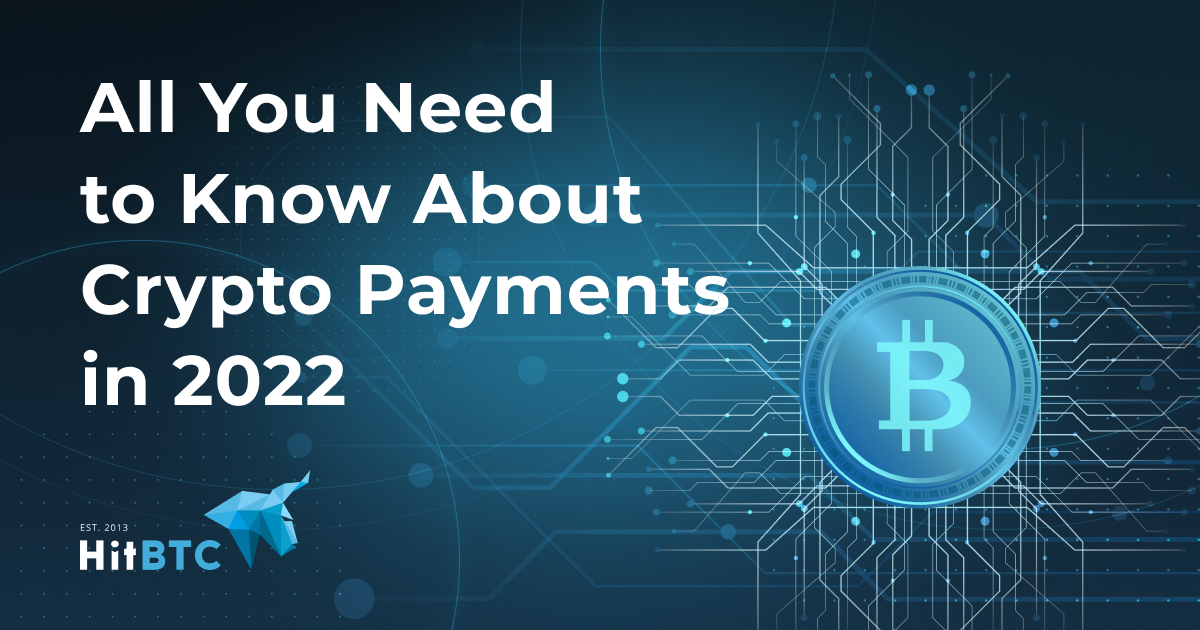All You Need to Know About Crypto Payments in 2022

In a modern world, the ability to pay for goods, services and transfer money worldwide is a vital necessity. Unfortunately, we see more and more restrictions implemented in that area, mainly due to political reasons but frequently also because of excessive compliance requirements.
In a world where as a result of political sanctions people can lose access to modern banking and an ability to make payments with their debit or credit cards, cryptocurrencies become more and more popular. Cryptocurrencies were designed to facilitate quick, cheap, and globally accepted transactions that remove a chain of intermediaries.
Crypto is still far from widespread adoption but more merchants accept crypto payments every year, so it’s about time to learn how crypto payments work.
Crypto Payments Principles
Ever since cryptocurrencies were introduced to the public, people started looking for ways to implement them as means of payment. The biggest obstacle in adopting crypto payments is volatility. However, with time, big enterprises like Starbucks and Microsoft, popular fast food chains, airlines, as well as small businesses embraced crypto payments. The number of companies accepting crypto for goods and services keeps on rising.
Direct P2P Payments
The most straightforward way to pay in crypto is to transfer digital assets from wallet to wallet, considering you know the recipient’s wallet address. Although it is cheaper than using an intermediary, it is also riskier. P2P transactions make no room for mistakes as they are irreversible, so sending a coin to the wrong address will result in a permanent loss of funds.
Payment Gateways
Payment gateways help avoid unfortunate accidents by enabling recipients to create QR codes that act as digital invoices with all the payment info. After the customer scans the code and confirms the transaction, crypto goes directly to the recipient’s wallet. The whole process takes no longer than a few minutes and is ultimately secure.
Crypto Cards
In recent years, prepaid crypto credit or debit cards have been getting more traction. They allow you to pay for just about anything since the card provider immediately converts crypto to fiat and the merchant receives payment in an acceptable fiat currency. As of now, both Visa and Mastercard have offerings for financial service providers, which support prepaid crypto cards.
Pros and Cons of Crypto Payments
Crypto payments are a great alternative to fiat transactions.
Firstly, crypto is global and accessible – you do not need to have a bank account in order to transact in crypto. This is especially important for countries with low access to banking services, as well as those restricted from participating in international trade.
Secondly, crypto payments are way faster than traditional banking payment services. While it doesn’t matter much for a customer, the retailers typically have to wait several days to receive funds paid via credit card in their bank accounts. With crypto, the funds are deposited almost instantly.
Last but not least, crypto payment fees are often lower than credit card fees.
As for the downsides, unless you transact exclusively in stablecoins, volatility is still an issue. Also, you will most likely have to undergo an identity verification procedure to use any of the gateways. And of course, crypto payments aren’t as widespread as cards and cash yet.
The Bottom Line
The demand for using crypto as a payment method keeps on increasing. It is only a matter of time before all the major enterprises start accepting digital currencies alongside fiat.
Meanwhile, you can always take your first steps into the world of cryptocurrency and buy cryptocurrencies on the HitBTC exchange.